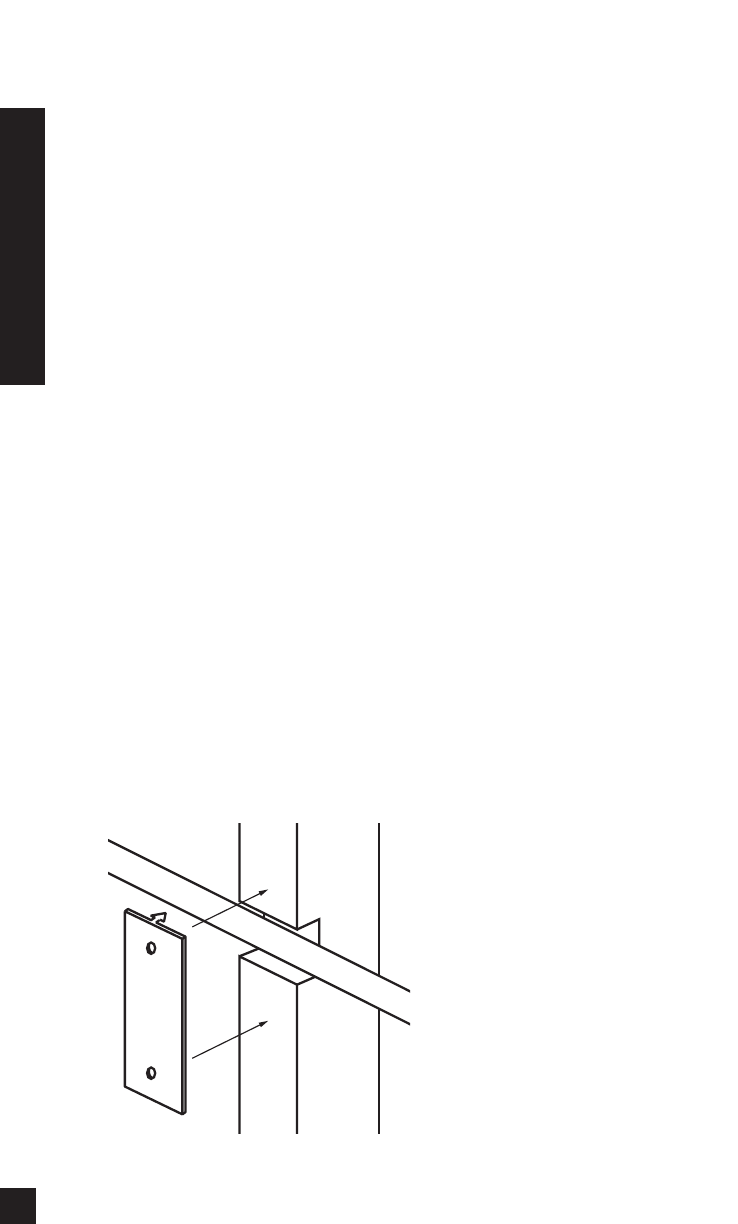
Installation
Fundamentals
Running the Speaker Wire in New
Construction
If you have doubts about whether you are
capable of installing a Niles ceiling mount
loudspeakers, consult a Niles dealer or
professional installer. They have special
tools, techniques, and experience to make
the impossible possible. The installer can
provide you with an estimate before any
work is done.
Scheduling and Preparation
Plan to schedule the speaker wiring after
the electrical wiring is finished. That way
you can avoid wire routes which could
potentially induce hum over the speaker
wire. The basic rules are:
• Never run speaker wire through the
same hole as an electrical cable.
• Never run speaker wire into the same
J-box as electrical cable.
• Avoid running the speaker wire beside
the electrical cable. Keep your speaker
cable at a distance of at least 18"-22"
from any electrical power cable.
Side-by-side wiring is unavoidable in par-
ticular spots in every house, just move the
speaker wire route away as soon as possi-
ble. If construction forces a side by side
run for more than ten feet, install metal
conduit or shielded speaker wire. Low-
voltage wires such as doorbells, inter-
coms, telephone, security, or television
cannot cause interference or hum on your
speaker wires, so you can safely run all of
them at the same time, through the same
holes, side-by-side.
Before you drill any holes, mount the
speaker brackets in the desired speaker
locations and mount open backed J-boxes
where the in-wall volume controls and
stereo equipment will be.
Safety First!
Wear gloves, safety goggles and head pro-
tection when drilling
. Avoid nails, they ruin
bits and they can cause injury. Pay particu-
lar care when using “hole-hogs” and other
powerful electric drills; the torque of the
drill when suddenly stopped by a nail can
break the wrist of a strong man.
Drilling
Use a bit that is large enough for the wires
you plan to run. An auger bit is the pre-
ferred bit for rough-in wiring. It will actu-
ally pull itself through the wood, so that
the drill motor, not you, does most of the
work. You may be drilling a lot of holes,
so this is an important consideration.
Always drill the holes in the center of the
stud. If you have to notch the stud or drill
the hole closer than one inch from the
edge of the stud, protect the wire with a
nail plate
(See Figure 5).
When drilling holes in ceiling joists drill
in the center of the joists and try to locate
the hole near the end of the joist.
DO
NOT drill through a “gluelam” or any
load bearing beam without the direction
9
Installation Fundamentals
Figure 5


















